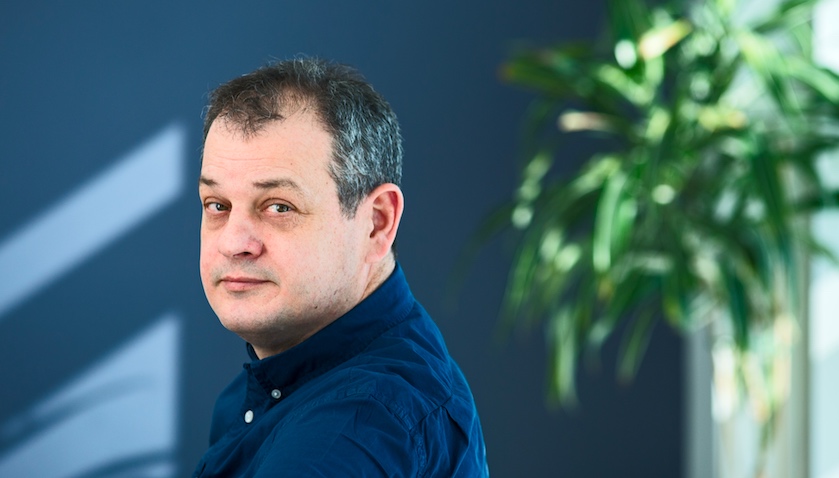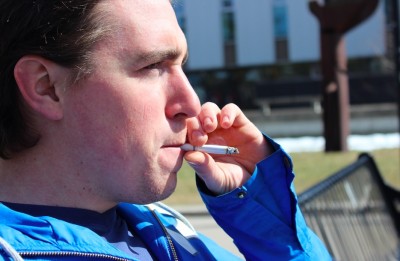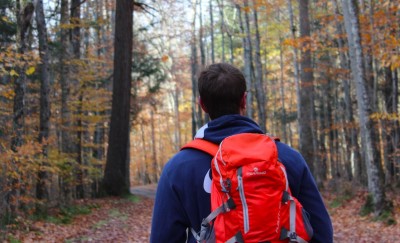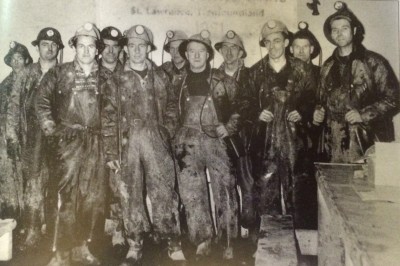 Dr. Paul Villeneuve, Department of Health Sciences
Dr. Paul Villeneuve, Department of Health Sciences
By Ariel Root
Air pollution, green space, and wind turbines. Cardiovascular disease, diabetes, dementia, and cancer. Formal training in statistics, and epidemiology. And partnerships across mathematics, chemistry, geography, and biological disciplines. Paul Villeneuve reflects back on an inspirational co-op work term at Health Canada during his statistics undergraduate training. He was required to apply statistics to better understand specific health issues, but found it much more appealing than theoretical statistics. “I guess,” he laughs, “that’s when I thought epidemiology would be more fun.”
Villeneuve is an Associate Professor in the Department of Health Sciences, and cross-appointed to the School of Mathematics and Statistics at Carleton University. He is also an Affiliate Scientist at the Ontario Occupational Cancer Research Centre (OCRC) in Toronto, Senior Editor for the Canadian Journal of Public Health, and an Associate Editor for Health Promotion and Chronic Disease Prevention in Canada.
 From the beginning of his time at the Laboratory Centre for Disease Control at Health Canada in 1988, Villeneuve has been involved in controversial health issues that are interwoven with political implications, such as the taxation of cigarettes. Being part of such a strong team of epidemiologists, Villeneuve recalls their high caliber research on topics including physical activity, pesticide use, exposure to radon, and cigarette smoking, including second hand exposure. “It generated a lot of attention [because] we didn’t understand the risks like we do now. These things were extremely relevant to many developing policies; it was easy to become excited about the research.”
From the beginning of his time at the Laboratory Centre for Disease Control at Health Canada in 1988, Villeneuve has been involved in controversial health issues that are interwoven with political implications, such as the taxation of cigarettes. Being part of such a strong team of epidemiologists, Villeneuve recalls their high caliber research on topics including physical activity, pesticide use, exposure to radon, and cigarette smoking, including second hand exposure. “It generated a lot of attention [because] we didn’t understand the risks like we do now. These things were extremely relevant to many developing policies; it was easy to become excited about the research.”
Today, Villeneuve’s primary research interests assess the link between environmental and occupational exposures on the health of Canadians. His combined expertise in epidemiology and biostatistics have resulted in close collaborations with Health Canada, the Public Health Agency of Canada, the OCRC, Cancer Care Ontario, and academic researchers across disciplines in both Canada and the US.
 “Much of my work [focuses] on the health impacts from long-term exposure to air pollution, and the health benefits of green space in urban areas.” His expertise has been applied to several large-scale cohort studies examining the association between ambient air pollution and green space, and chronic diseases. Specifically, associations between outdoor air pollution and the risk of cardiovascular disease, hypertension and diabetes; air pollution and its role on oxidative stress mechanisms related to dementia and neurodegenerative disease; urban green space access and its association with obesity and physical activity; the built environment and development of chronic disease; wind turbines and the potential health impacts and implications; and occupational causes of cancer.
“Much of my work [focuses] on the health impacts from long-term exposure to air pollution, and the health benefits of green space in urban areas.” His expertise has been applied to several large-scale cohort studies examining the association between ambient air pollution and green space, and chronic diseases. Specifically, associations between outdoor air pollution and the risk of cardiovascular disease, hypertension and diabetes; air pollution and its role on oxidative stress mechanisms related to dementia and neurodegenerative disease; urban green space access and its association with obesity and physical activity; the built environment and development of chronic disease; wind turbines and the potential health impacts and implications; and occupational causes of cancer.
Villeneuve’s research is influenced by stakeholder concerns, and the emerging literature. His health research continues to strengthen his belief that multi-disciplinary research teams are critical in developing in-depth health research perspectives and skills. “Think of all the many projects that involve clinicians, statisticians, geographers… you always need to draw from different disciplines. The nice thing is that people bring different perspectives, and you can then adapt [your research] as you learn from others. I’ve been able to work with many different researchers over long periods of time, and feel lucky to have developed both professional and personal relationships with them”. At Carleton, both the Department of Health Science and The CHAIM Centre combine disciplines, providing opportunities for continuing his engagement in existing and emerging collaborations with various health researchers.
Community engagement and involvement has heavily inspired his research passions. Villeneuve recalls his twenty-year involvement in evaluating the relationship between occupational exposure to radon and lung cancer among Newfoundland fluorspar miners. “We went into communities, talked with and engaged people, including the miners, and did the analysis.” Villeneuve recalls this as one the first projects that he felt truly excited about his work, “because for the first time, it was more than just looking at data. It was [about] going out and talking to people, and hearing of their stories.” A cemetery across the street from the museum of the Newfoundland Fluorspar miners contained many of the individuals who were included in the research. “My visit there taught me that there are important stories behind the lines of data that I typically run across in an office in Ottawa. Hearing first hand of some of these struggles, and the interest in re-opening the mine because of potential impacts of its closure provided me with a different perspective on how my research could matter at a local level.”

In fact, Villeneuve identifies this as one of the most satisfying results of his research; “interacting with communities, actual residents.” Publications as academic acknowledgement and recognition are satisfying, but “explaining the research— what it means, getting [community] feedback… that level of engagement” is more rewarding for Villeneuve. The general public “doesn’t usually read our papers, so town-hall meetings or workshops that bring together more senior community members is important”.
Villeneuve notes that online articles have become a very important and widely used method of knowledge translation “that wasn’t there 10 to 15 years ago”. He also acknowledges the evolution of the epidemiology field, especially in air pollution research. Satellites can now estimate ground level concentrations of pollution, and GPS and other apps provide better estimated exposures at an individual-level. As “the field continues to evolve, we continue to do things better and better, and [it continues to be] something that appeals to me”; an appeal that he doesn’t see fading out anytime soon.